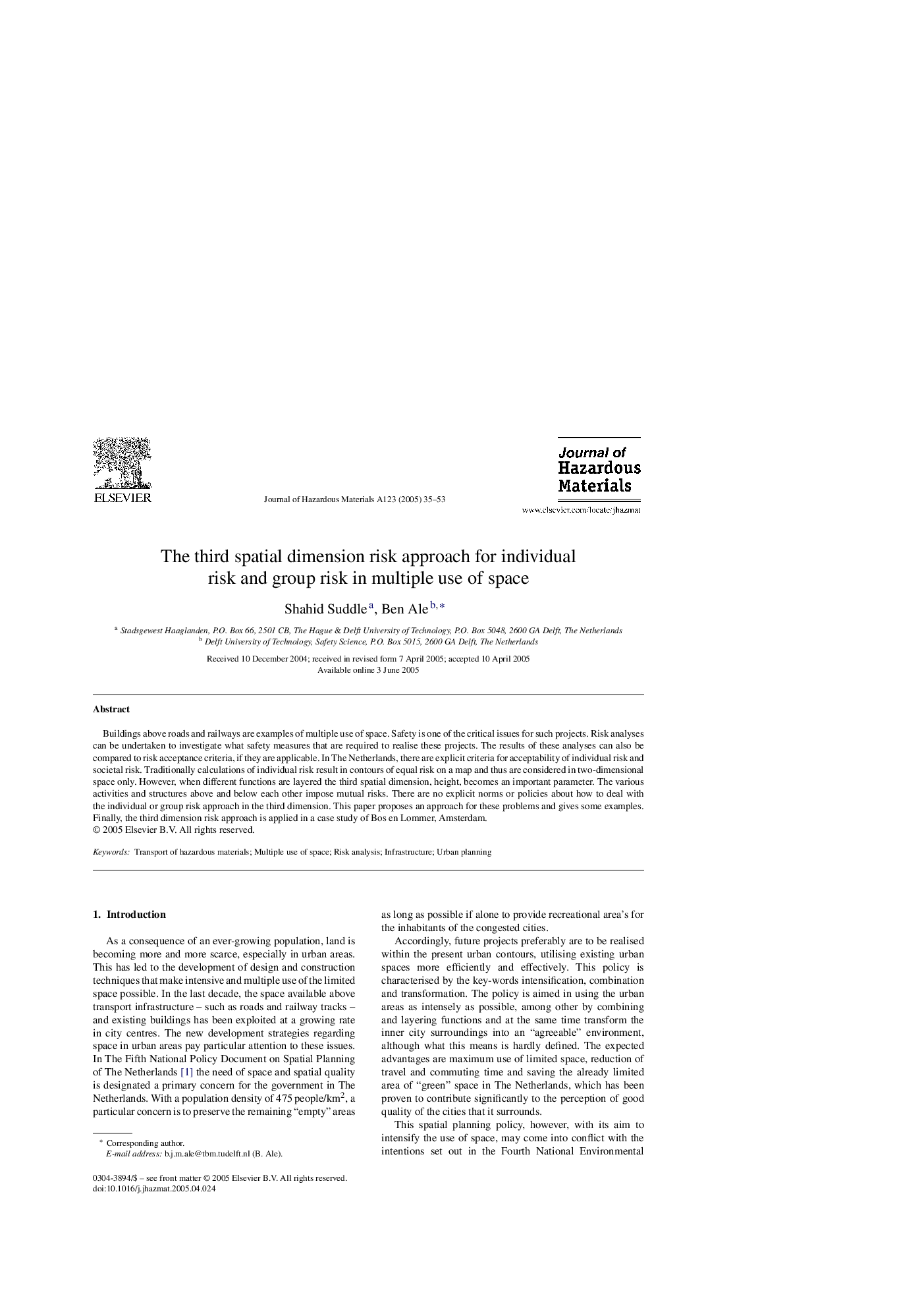| Article ID | Journal | Published Year | Pages | File Type |
|---|---|---|---|---|
| 9674197 | Journal of Hazardous Materials | 2005 | 19 Pages |
Abstract
Buildings above roads and railways are examples of multiple use of space. Safety is one of the critical issues for such projects. Risk analyses can be undertaken to investigate what safety measures that are required to realise these projects. The results of these analyses can also be compared to risk acceptance criteria, if they are applicable. In The Netherlands, there are explicit criteria for acceptability of individual risk and societal risk. Traditionally calculations of individual risk result in contours of equal risk on a map and thus are considered in two-dimensional space only. However, when different functions are layered the third spatial dimension, height, becomes an important parameter. The various activities and structures above and below each other impose mutual risks. There are no explicit norms or policies about how to deal with the individual or group risk approach in the third dimension. This paper proposes an approach for these problems and gives some examples. Finally, the third dimension risk approach is applied in a case study of Bos en Lommer, Amsterdam.
Related Topics
Physical Sciences and Engineering
Chemical Engineering
Chemical Health and Safety
Authors
Shahid Suddle, Ben Ale,
